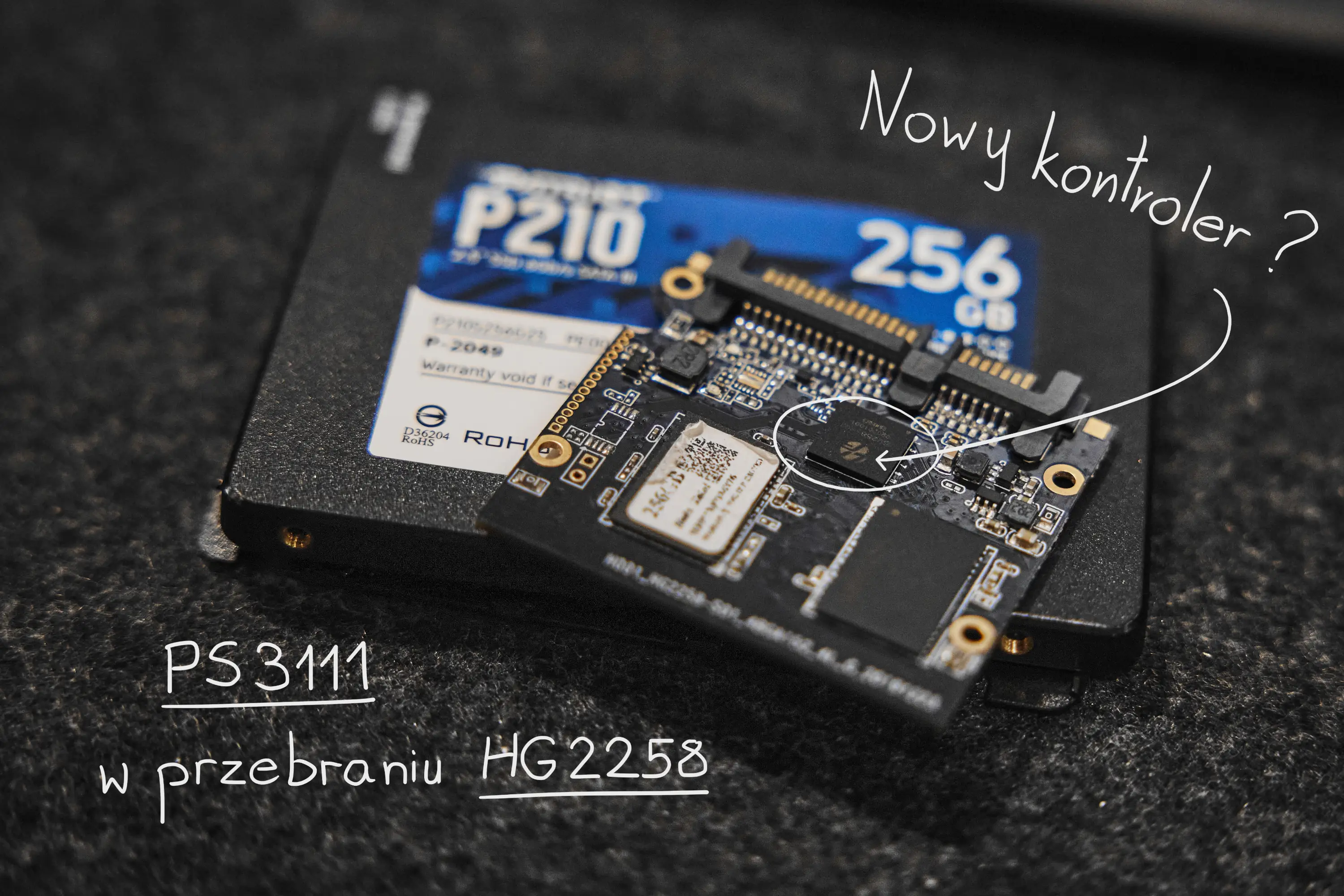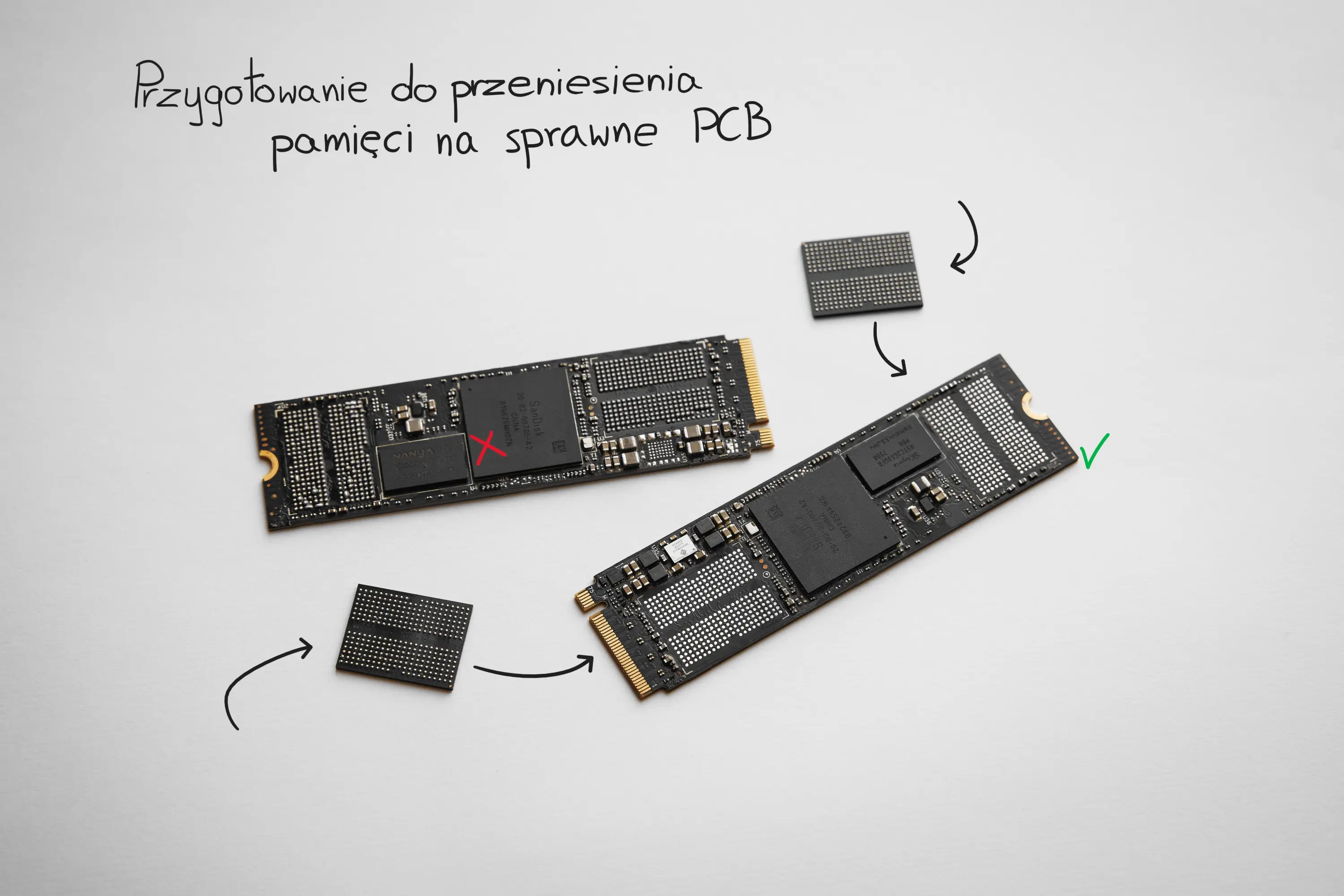Services
Data recovery from RAID
Data recovery from HDD / SSHD
Data recovery from SSD / NVMe
Data recovery from pendrive and memory card
Firmware database
Price list
Address and contact


And NVMe drives - Non-Volatile Memory Express.
In addition to all the advantages of SSD drives, such as speed, energy efficiency and the lack of mechanical components, they are also susceptible to failure. The data structure in these devices is much more complex than in the most advanced RAID arrays.
Due to the imperfections of electronic memories, algorithms embedded in the firmware manage their behavior "on the fly" and are responsible for, among others: reading, writing, ECC (error correction), block mapping, encryption, etc. This is why data recovery from SSD media is one of the biggest challenges in the Data Recovery industry.
Unlike traditional magnetic drives, SSD drives usually do not inform the user about problems and data loss is usually unexpected. Apart from logical damage, we encounter two serious damages that prevent access to the contents on the memory chips. These include software and physical damage to the controller or damage to disk electronics components.
Software problems most often arise as a result of too many damaged cells in memory modules, which means that the controller loses access to their contents.
The most popular case of this behavior is a drive recognized by the hardware as SATAFIRM S11, SandForce{200026BB} or Sandisk Milpitas.
To put it simply, in case of problems with the firmware, you need to access the drive in technological mode to repair its firmware, restore it to proper operation and regain access to data.

If the electronics are damaged, the damaged components should be located and replaced. Unfortunately, due to the lack of diagrams and, in virtually every case, due to the lack of descriptions of the elements, you have to obtain a compatible model and thus obtain the necessary parts.
In extreme situations, when repairing the original PCB is impossible, we must transfer all key components for a given item to the donor board.
If the controller is damaged, the only option is to replace it or desolder the bones and read them on a dedicated programmer (ChipOff is possible for some models based on SanDisk, Phison or Indilinx controllers).
The memory images prepared in this way should be mounted to the appropriate algorithm of a given controller, and its operation must be imitated in such a way that the logical structure is properly rebuilt. Only after this procedure you can start data recovery.

SM2246, SM2258, SM2259, SM2260, SM2262 (HP H8038), SM2263 (HP H8068)
PS3105, PS3108, PS3109, PS3110, PS3111 (HG2258), PS3112, PS5007, PS5008, PS5012, PS5012, PS5013, PS5016
88SS1074, 88SS9174, 88SS9175, 88SS9187, 88SS9189, 88SS9190, 88SS1093
S3C29MAX01-Y340, S3C29RBB01-YK40, S4LJ204X01-Y040, S4LN021X01-8030, S4LN045X01-8030, S4LN054X02-Y030
MAS0902A, MAS1102
If your disk is not on the list or is not even supported by official tools, we can check whether data recovery will be possible.

